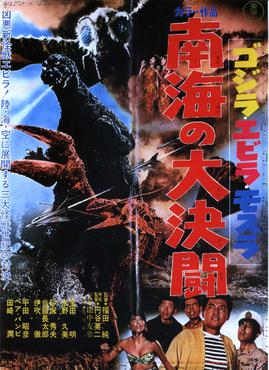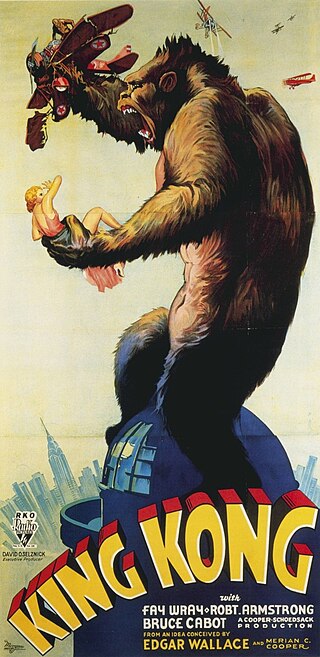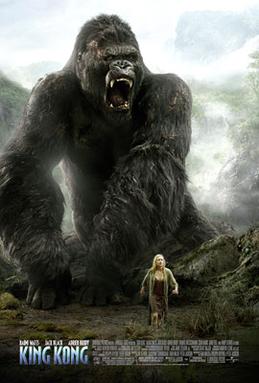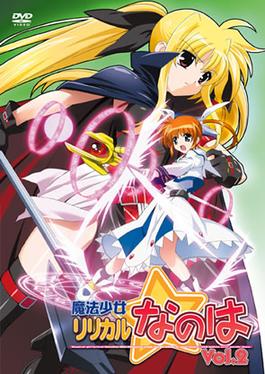
Vina Fay Wray was a Canadian-American actress best known for starring as Ann Darrow in the 1933 film King Kong. Through an acting career that spanned nearly six decades, Wray attained international recognition as an actress in horror films. She has been dubbed one of the early "scream queens".

Ebirah, Horror of the Deep is a 1966 Japanese kaiju film directed by Jun Fukuda and produced and distributed by Toho Co., Ltd. The film stars Akira Takarada, Kumi Mizuno, Akihiko Hirata and Eisei Amamoto, and features the fictional monster characters Godzilla, Mothra, and Ebirah. It is the seventh film in the Godzilla franchise, and features special effects by Sadamasa Arikawa, under the supervision of Eiji Tsuburaya. In the film, Godzilla and Ebirah are portrayed by Haruo Nakajima and Hiroshi Sekita, respectively.

King Kong is a 1933 American pre-Code adventure horror monster film directed and produced by Merian C. Cooper and Ernest B. Schoedsack, with special effects by Willis H. O'Brien. Produced and distributed by RKO Radio Pictures, it is the first film in the King Kong franchise. The film stars Fay Wray, Robert Armstrong and Bruce Cabot. In the film, a giant ape dubbed King Kong captured from Skull Island attempts to possess a beautiful young woman.

The Last Unicorn is a 1982 American animated fantasy film directed and produced by Arthur Rankin Jr. and Jules Bass, from a script by Peter S. Beagle adapted from his 1968 novel of the same title. The plot concerns a unicorn who, upon learning that she is the last of her species on Earth, goes on a quest to find out what has happened to others of her kind. It was produced by Rankin/Bass Productions for ITC Entertainment and animated by Topcraft.

Snuff is a 1976 splatter film directed by Michael Findlay and Horacio Fredriksson. Originally an exploitation film loosely based on the 1969 murders committed by the Manson Family, it is most notorious for being falsely marketed as if it were an actual snuff film. The controversy about the film was deliberately manufactured to attract publicity: it prompted an investigation by the New York County District Attorney, who determined that the murder shown in the film was fake. This picture contributed to the urban legend of snuff films, although the concept did not originate with it.

Dame Frances Rosemary Walsh is a New Zealand screenwriter and film producer.

Richard Horatio Edgar Wallace was a British writer of sensational detective, gangster, adventure, and sci-fi novels, plays and stories.

King Kong is a 2005 epic adventure monster film co-written, produced, and directed by Peter Jackson. It is the eighth entry in the King Kong franchise and the second remake of the 1933 film of the same title, following the 1976 film. The film stars Naomi Watts, Jack Black, and Adrien Brody. Set in 1933, it follows the story of an ambitious filmmaker who coerces his cast and hired ship crew to travel to mysterious Skull Island. There they encounter prehistoric creatures and a legendary giant gorilla known as Kong, whom they capture and take to New York City.

King Kong is a 1976 American monster adventure film produced by Dino De Laurentiis and directed by John Guillermin. It is a modernized remake of the 1933 film about a giant ape that is captured and taken to New York City for exhibition. It stars Jeff Bridges, Charles Grodin, and Jessica Lange in her first film role, and features mechanical effects by Carlo Rambaldi and makeup effects by Rick Baker who also played the title character. It is the fifth entry in the King Kong franchise.

Godzilla Raids Again is a 1955 Japanese kaiju film directed by Motoyoshi Oda, with special effects by Eiji Tsuburaya. Produced and distributed by Toho Co., Ltd., it is the second film in the Godzilla franchise, and a sequel to Godzilla (1954). The film stars Hiroshi Koizumi, Setsuko Wakayama, Minoru Chiaki, and Takashi Shimura, with Haruo Nakajima as Godzilla and Katsumi Tezuka as Anguirus. In the film, Japan struggles to survive Godzilla's return, as well as its destructive battle against its ancient foe Anguirus.

Dolemite is a 1975 American blaxploitation crime comedy film and is also the name of its principal character, played by Rudy Ray Moore, who co-wrote the film and its soundtrack. Moore, who started his career as a stand-up comedian in the late 1960s, heard a rhymed toast about an urban hero named Dolemite from a regular at the record store where he worked, and decided to adopt the persona as an alter ego in his act.
An audio commentary is an additional audio track, usually digital, consisting of a lecture or comments by one or more speakers, that plays in real time with a video. Commentaries can be serious or entertaining in nature, and can add information which otherwise would not be disclosed to audience members.

King Kong Escapes is a 1967 kaiju film directed by Ishirō Honda, with special effects by Eiji Tsuburaya. The film was a Japanese–American co-production between Toho and Rankin/Bass, and stars Rhodes Reason, Linda Miller, Akira Takarada, Mie Hama, Eisei Amamoto, with Haruo Nakajima as King Kong and Hiroshi Sekita as Mechani-Kong and Gorosaurus. The film is loosely based on Rankin/Bass' series The King Kong Show, and was the second and final Toho-produced film featuring King Kong, until its 2021 collaboration with Warner Bros on Godzilla vs. Kong. King Kong Escapes was released in Japan on July 22, 1967, and released in the United States on June 19, 1968. It is the fourth entry in the King Kong franchise.

Magical Girl Lyrical Nanoha is a Japanese anime television series directed by Akiyuki Shinbo, with screenplay written by Masaki Tsuzuki and produced by Seven Arcs. It forms part of the Magical Girl Lyrical Nanoha series. The Japanese Association of Independent Television Stations broadcast 13 episodes between October and December 2004. The series is a spin-off of the Triangle Heart series and its story follows a girl named Nanoha Takamachi who decides to help a young mage named Yūno to recover a set of 21 artifacts named the "Jewel Seeds".

King Kong Lives is a 1986 American monster adventure film directed by John Guillermin. Produced by the De Laurentiis Entertainment Group and featuring special effects by Carlo Rambaldi, the film stars Linda Hamilton and Brian Kerwin.

Carrie is a 1976 American supernatural horror film directed by Brian De Palma from a screenplay written by Lawrence D. Cohen, adapted from Stephen King's 1974 epistolary novel of the same name. The film stars Sissy Spacek as Carrie White, a shy teenage girl who is constantly mocked and bullied at her school. The film also features Piper Laurie, Amy Irving, Nancy Allen, William Katt, P. J. Soles, Betty Buckley, and John Travolta in supporting roles. It is the first film in the Carrie franchise.

A jungle girl is an archetype or stock character, often used in popular fiction, of a female adventurer, superhero or even a damsel in distress living in a jungle or rainforest setting. A prehistoric depiction is a cave girl.
King Kong is one of the best-known figures in cinema history. He and the series of films featuring him are frequently referenced in popular culture around the world. King Kong has achieved the stature of a pop-culture icon and modern myth. King Kong has inspired advertisements, cartoons, comic books, films, magazine covers, plays, poetry, political cartoons, short stories, television programmes, and other media. The forms of references to King Kong range from straight copies to parodies and humorous references.

The Three Musketeers is a 2011 period action-adventure film directed by Paul W. S. Anderson, and loosely based on Alexandre Dumas's 1844 novel of the same title. It stars Matthew Macfadyen, Logan Lerman, Ray Stevenson, Milla Jovovich, Luke Evans, Mads Mikkelsen, Orlando Bloom, and Christoph Waltz. It is based on Alexandre Dumas's 1844 novel of the same title with clock-punk elements. The story follows Three Musketeers who must foil a plot against the king of France.

King Kong is an American monster media franchise that consists of thirteen films, as well as television, novels, comic books, video games, attractions, and other merchandise. The franchise is centered on King Kong, a giant ape living on a primordial island inhabited by prehistoric creatures. The original film King Kong was co-directed by Merian C. Cooper and Ernest B. Schoedsack and was released on March 2, 1933; it was a box office success, despite opening during the Great Depression. The film's stop motion effects by Willis H. O'Brien revolutionized special effects, leaving a lasting impact on the film industry worldwide.


















